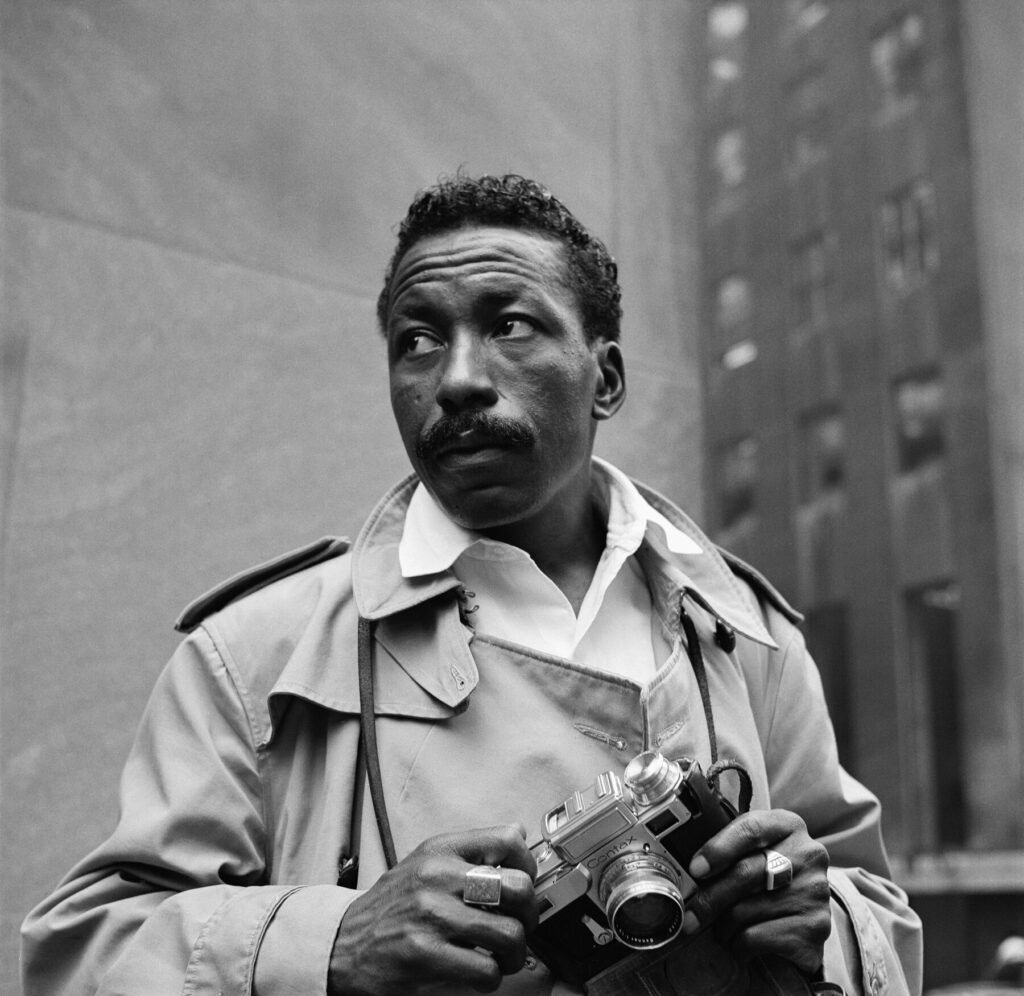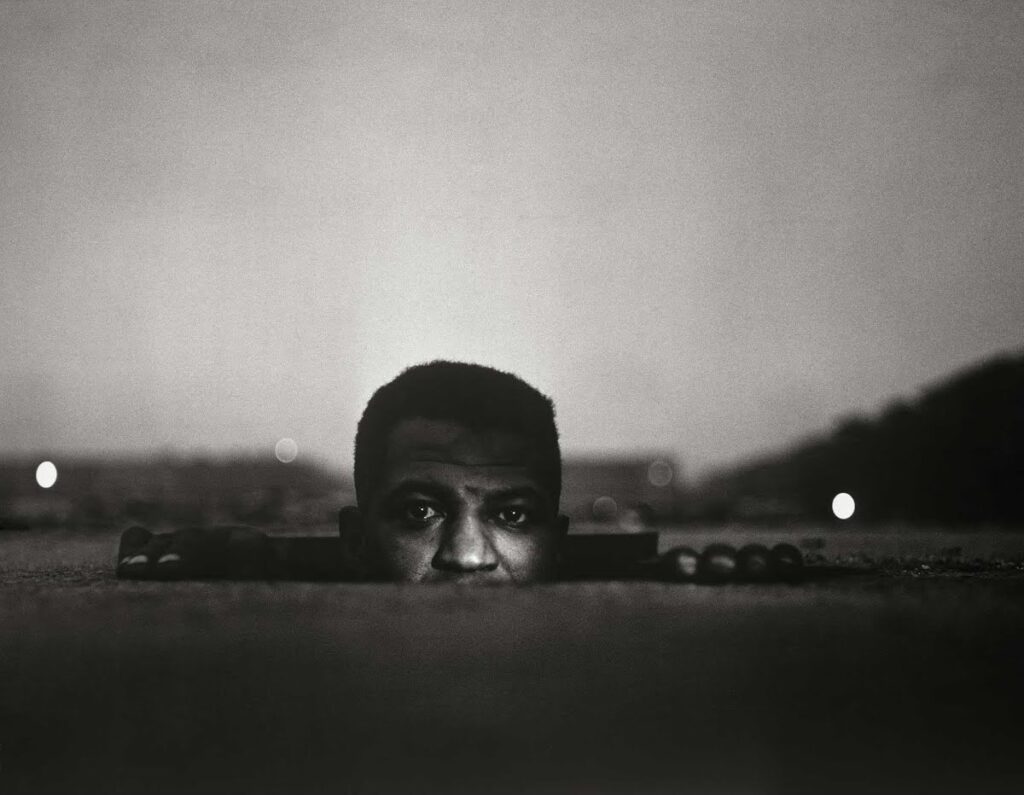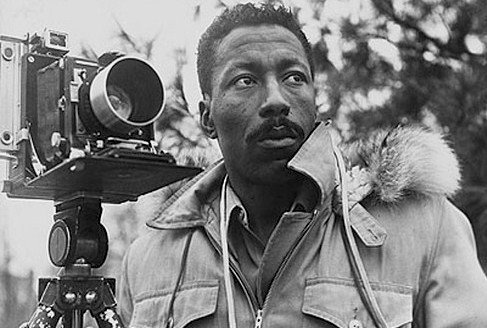Let’s dive into the captivating world of Gordon Parks, a true artist who told stories with his camera. Emerging Man is a special piece in his collection, and in this journey, we’ll explore not just the photograph but the life of Gordon Parks, his incredible career, and the fascinating narrative hidden within Emerging Man.
Who was Gordon Parks

Meet Gordon Parks, a storyteller with a camera. Born in a time when things were tough, especially for people of color, Parks faced challenges but emerged as the first African American staff photographer for Life magazine. His camera wasn’t just a tool; it was his voice against injustice.
His Career
But Parks wasn’t just a photographer; he was a filmmaker, a writer, and even a musician. His movies, like “Shaft” and “The Learning Tree,” made waves. Despite facing difficulties, Parks used his art to break down barriers and fight for equality, leaving behind a legacy that continues to inspire.
What is Happening in Emerging Man

| Artist | Gordon Parks |
| Date Created | 1952 |
| Medium | Gelatin silver print |
| Genre | Documentary Photography |
| Period | Post-World War II, Civil Rights Movement |
| Dimensions | 16 x 20 inches |
| Series/Versions | Original print, reprints |
| Where Housed | The Gordon Parks Foundation Collection, New York |
Now, let’s zoom into Emerging Man. Created in 1952, this piece is like a snapshot of a crucial moment in a human journey, frozen in time by Gordon Parks’ lens.
Interesting Facts about Emerging Man
Symbolism: Emerging Man is like a visual poem. Parks captures the strength of the human spirit, showing a figure emerging from darkness into light. It’s a powerful symbol of hope and resilience.
Influence of Renaissance Art: Parks loved the art of the Renaissance, especially Michelangelo’s “David.” You can see this influence in Emerging Man, where light and shadow play together in a way that echoes those classic masterpieces.
Connection to Civil Rights Movement: Imagine this – Emerging Man was born during a tough time in America. It quietly speaks about the Civil Rights Movement. The figure’s journey upward mirrors the collective struggle and the dream of a brighter tomorrow.
Technique and Composition: Parks was like a painter with his camera. In Emerging Man, he pays attention to every little detail. The light, the shadow, and how the figure is placed—all of it creates a picture that’s not just visually striking but emotionally powerful.
Legacy: Emerging Man is more than just a photo; it’s a story frozen in time. Even today, it inspires artists. It’s a reminder of the universal journey we’re all on, facing challenges and seeking equality.
Exploring Gordon Parks’ World

To truly appreciate Emerging Man, we need to step into Gordon Parks’ shoes. He wasn’t just a photographer; he was a storyteller with a camera, a man who used his art to speak up for those whose voices were often ignored.
Gordon Parks was born in Fort Scott, Kansas, in 1912, at a time when racial segregation was deeply ingrained in society. Growing up in poverty, he faced adversity from the start. However, he didn’t let these challenges define him. Instead, he used them as fuel for his artistic journey.
In the 1940s, Parks became the first African American staff photographer for Life magazine, a groundbreaking achievement at a time when racial barriers were still firmly in place. Through his lens, he captured the vibrancy of urban life, social issues, and the struggles of marginalized communities. His photographs were more than images; they were a call to action, a plea for understanding and empathy.
As the 1960s unfolded, Parks transitioned to filmmaking, directing notable works like “Shaft” and “The Learning Tree.” He continued to break barriers, becoming the first African American to direct a major Hollywood film. His impact extended beyond the arts, influencing a new generation of artists and activists.
Gordon Parks faced prejudice and discrimination throughout his life, but he never wavered in his commitment to social justice. His lens was a tool for change, a means to bridge gaps and foster understanding. His legacy is not just in the photographs he captured or the films he directed; it’s in the inspiration he continues to provide to artists and advocates for equality.
Frequently Asked Questions
Who was Gordon Parks’ mentor?
Unofficially, Parks received encouragement to start taking pictures of poverty and injustice in Washington from Roy Stryker, his mentor at the Farm Security Administration.
What techniques did Gordon Parks use?
Fashion shoots by Parks are characterized by the use of artificial lighting, dynamic poses, and luxurious settings as a framing element. When color ruled in Parks’ subject matter, as it did in his 1956 photos of Mobile, Alabama, color first appeared in his photography.
Conclusion
In exploring Gordon Parks’ world and dissecting the layers of Emerging Man, we uncover not just a photograph but a profound narrative. Parks’ life was a testament to resilience and determination, and his art served as a powerful voice for change.
Emerging Man is a visual journey, a story frozen in time, and a reflection of the human spirit’s indomitable strength. As we immerse ourselves in the details of this artwork, we connect with a universal exploration of challenges, hope, and the ongoing quest for equality. Gordon Parks’ legacy lives on, not only in the frames of his photographs but in the inspiration he continues to instill in the hearts of those who engage with his art.













